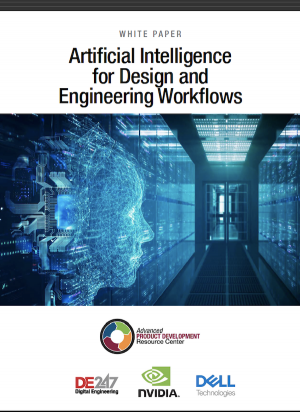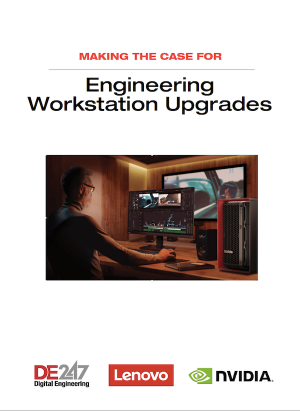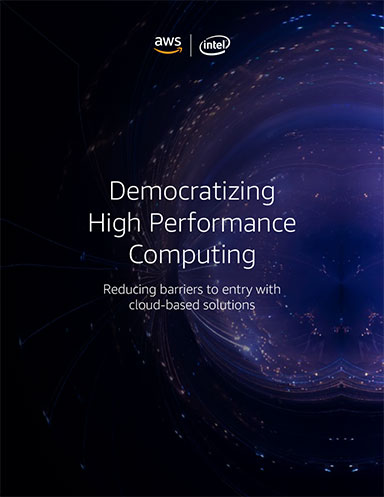Quality and Safety Drive Monitor Innovations
The latest monitors reduce eye strain while increasing visible detail.

The Eyesafe certification standard evaluates seven aspects of monitor use. Image courtesy of Eyesafe.
Latest News
July 18, 2024
Engineering workstation utility comes from more than fancy silicon and complex software. Display technology innovations have made possible advancement of such key technologies as real-time simulation and model-based design.
Monitors are today’s gateway, connecting ideas with plans. The less engineers have to think about the quality of display, the more they can focus on ideas and the problem at hand. The best monitors enhance productivity, accuracy and creativity.
As the guru of computer graphics, Jon Peddie once said, “see more, do more.” Seeing more is not only about monitor size; it is also about color quality, eye health and the deep technical details of how monitors are created.
The typical user of an enterprise-class computer will look at an image and be satisfied if the colors seem correct and clear. A typical user of a workstation needs to know color calibration is correct, the refresh rate is high and the screen is designed for all-day use. Suitability for multiple monitors is also a key priority.
Switching to In-Plane Switching
In the past couple of years, in-plane switching (IPS) has gained broad commercial use for workstations. IPS reorients the crystals and polarizers in the liquid-crystal display (LCD) for better performance. This offers several advantages:
More accurate colors: IPS displays push backlight through the LCD crystals differently than earlier technologies, resulting in a more accurate color display.
Wider array of colors: IPS uses eight-bit panels times three (red/green/blue). The simple math of 8 x 3 = 24 just happens to match the 24-bit color palette of today’s graphics processing units (GPUs).
Better viewing angles: IPS crystals run parallel to the device; previous display technology ran perpendicular to the device. This 90° move means the monitor can be seen from much wider angles before color or contrast is compromised. IPS monitors are offered in many sizes at multiple price points. For engineering purposes, look for those offering Quad high-definition (HD) or Ultra HD resolution; adjustable ergonomic stands; and anti-eye strain technology.
Making Blue Light Safe Again
Optical science now acknowledges prolonged exposure to high-energy visible light—commonly known as blue light—is not healthy. It can cause eye strain and fatigue. In regular use it disrupts sleep patterns. Some studies suggest prolonged exposure to high levels of blue light might contribute to retinal damage over time.
For individuals who use monitors extensively, such as engineers and designers, managing blue light exposure becomes crucial for maintaining eye health, sleep quality and overall well-being. There is now a standards group to help monitor vendors. Eyesafe, a health and technology company in Minneapolis, MN, offers a certification standard regarding blue light that aims to reduce harmful emissions and still maintain color quality and monitor performance.
Eyesafe Certification, now at 2.0, is a process that includes testing by TÜV Rheinland, an independent third-party organization. Eyesafe collaborates with leaders in healthcare and technology to develop its standards.
For engineering professionals, monitors with Eyesafe Certified 2.0 offer several benefits. They help reduce eye strain and potential long-term effects of blue light exposure, such as disrupted sleep patterns and digital eye fatigue. In addition, the certification ensures that color integrity is preserved, allowing engineers to view designs and models with true-to-life colors, critical for accurate representation and decision-making.
Several monitors suitable for engineering workstations offer Eyesafe Certified 2.0 certification, providing enhanced blue light protection and color performance. Here are some options:
- BenQ 28-in. 4K+ Programming Monitor (RD280U and RD280UA)
- BenQ 27-in. Eye-Care Monitor (GW2790QT)
- BenQ 31.5-in. Eye-Care Monitor (GW3290QT)
- Philips 32:9 SuperWide curved monitor (49B2U5900CH/27)
- Lenovo ThinkVision T27p-30 Wide UHD Monitor
These monitors not only provide the necessary specifications for engineering work but also incorporate the latest Eyesafe technology.

Big and Wide
Workstation monitors continue to redefine the visual workspace with larger monitors, curved surfaces and new aspect-ratio configurations.
In the context of computer monitors, aspect ratio refers to the proportional relationship between a display’s width and height. Expressed as a ratio of width to height (e.g., 16:9, 21:9, 32:9), it determines the shape and dimensions of the viewable area. For engineering workstations, aspect ratio is a critical factor influencing the amount and layout of visible information.
Wider ratios like 21:9 or 32:9 provide extended horizontal space, allowing for side-by-side application windows or expansive views of complex designs. Traditional ratios like 16:9 offer a balanced viewing area suitable for diverse tasks. Understanding aspect ratios is essential for engineers when selecting monitors that optimize their workspace and align with specific software requirements or multitasking needs.
The benefits of these wider aspect ratios are particularly pronounced in engineering and design applications. With more horizontal real estate, professionals can simultaneously view multiple drawings, 3D models or data sets without constant window switching or scrolling. This enhanced visibility facilitates better comparative analysis and streamlines workflow efficiency.
Ultrawide and super-ultrawide curved displays have further enhanced the user experience by providing an immersive field of view. The gentle curve of these monitors follows the natural arc of human vision, reducing eye strain during long work sessions and creating a more ergonomic viewing experience.
Companies leading in widescreen innovation include Dell, with their UltraSharp series, LG’s UltraWide lineup and Samsung’s Odyssey range. The flagship models from each of these vendors feature high resolutions, color accuracy and additional productivity-enhancing features tailored for professional use.
Resolution Revolution
There has been a dramatic surge in resolution capabilities in recent years. From the general commercial standard of 4K (3840x2160 pixels), monitors with resolution at 5K (5120x2880 pixels) and 8K (7680x4320 pixels) are becoming increasingly common. For engineers and designers, these high-resolution monitors offer unprecedented levels of detail, crucial for intricate CAD models, complex schematics and data-rich visualizations. The enhanced pixel density allows for sharper text, more accurate color representation, and the ability to view large-scale projects with remarkable clarity.
Pushing the boundaries further, some manufacturers are developing displays with resolutions beyond 8K, such as 16K (15360x8640 pixels). These extreme high-resolution monitors find applications in specialized fields like medical imaging, advanced scientific visualization and ultra-detailed architectural rendering. They provide an unparalleled level of detail that can be critical in scenarios where the most minute visual information can make a significant difference.

Industry leaders like Dell, LG and Samsung are beginning to offer these higher resolutions. Adoption of such high-resolution displays comes with its own set of challenges. The most significant is the demand for powerful graphics processing capabilities. Rendering millions of pixels smoothly, especially for complex 3D models or real-time simulations, requires the most robust GPUs and substantial computing power.
Multi-Monitor Options
Multi-monitor setups are now the norm for most engineering workstations. They offer expanded desktop workspace and enhanced productivity. By extending the visual field, engineers can simultaneously view multiple applications, documents or data sets, streamlining workflow and reducing the need for constant switching between windows.
Typical configurations range from dual-monitor setups, ideal for code writing alongside reference materials, to triple-monitor arrays that provide panoramic views of complex 3D models or expansive project timelines. Curved monitor arrangements have gained popularity as an expansive single-monitor option. They offer a more immersive experience while reducing eye strain during extended work sessions.
To optimize these multi-display environments, various software tools have emerged. Applications like DisplayFusion and UltraMon allow for advanced window management, taskbar customization and seamless cursor movement across screens. Operating systems have also evolved to better support multi-monitor setups, with features like Windows’ Snap Assist.
However, multi-monitor configurations are not without challenges. Bezels between screens can interrupt the visual flow, particularly in applications requiring continuous viewing areas. This is one reason curved monitors are becoming more popular. Proper monitor alignment and arrangement are crucial for ergonomics and visual comfort, often requiring specialized mounting solutions.
Emerging technologies are pushing the boundaries of multi-display setups. Monitor matrices, which use multiple smaller displays to create one large, seamless screen, offer flexibility and scalability. Video walls, traditionally used in control rooms, are finding applications in high-end engineering environments, providing massive display areas for data visualization and collaborative work.
More BenQ Coverage
More Dell Coverage

More Lenovo Coverage

Subscribe to our FREE magazine, FREE email newsletters or both!
Latest News
About the Author
Randall S. Newton is principal analyst at Consilia Vektor, covering engineering technology. He has been part of the computer graphics industry in a variety of roles since 1985.
Follow DE







